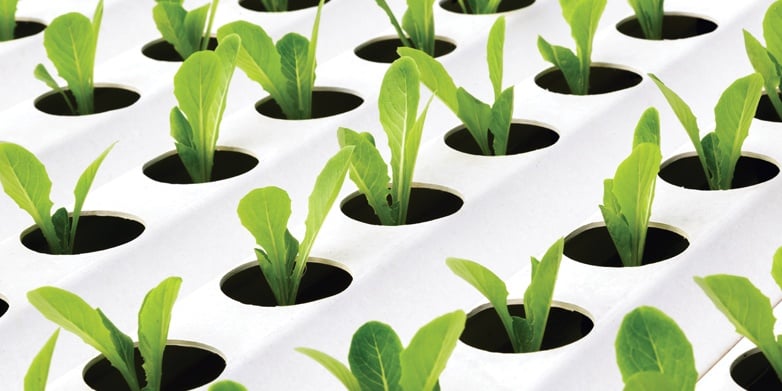
The term hydroponics means ‘working water’, stemming from the Latin word for water, “hydro”, and labor, “ponos”. This subset of hydroculture involves growing plants without the use of soil, and instead using a nutrient rich water solution.
This blog will look at some basics of hydroponics and the different types of hydroponic systems.
Why hydroponics?
Over the years, a number of system variations have been developed to better suit the plants and the operation. Most hydroponic production in the U.S. today is done in greenhouses. Hydroponics is quickly gaining popularity in places where traditional farming simply isn’t an option such as in large cities where there is little access to agriculturally viable land.
Hydroponic systems and variations allow a greater amount of flexibility for growers. For those who may have limited grow space, plants can be moved as needed and seedling production can be done elsewhere. With plants grown indoors, there is no pause for seasonality. These systems are engineered to provide the proper amount of nutrients at exactly the right time resulting in higher yields and better plant quality.
The grower controls the nutrients, the growth cycle, and the water. Variability is much less in such a controlled environment, lending to less waste and less money. Although hydroponic systems depend on water and water-based solutions to perform properly, they use about one-twentieth of the amount of water used in traditional gardening and farming.
With so many advantages, hydroponic farming is a great opportunity to maximize healthy plant yield in a more sustainable manner. As with all things, it is good to understand what the downsides may be. Depending on the level of your operation, there may be significant initial costs. Many small, home-based hydroponic systems can be built relatively cheaply, but large-scale farming operations can be costly. Pumps, piping, and tanks add up. You may also need to consider the type of environment you are using. If growing entirely indoors, you may need to purchase supplemental lighting. And of course, all these mechanical pieces mean higher energy costs.
Some technical knowledge is needed to understand the chemical needs of yours plants. Hydroponic systems require much more monitoring than traditional plant growing. Don’t worry, though, there are many resources out there that provide sound education.
Types of Hydroponics Systems
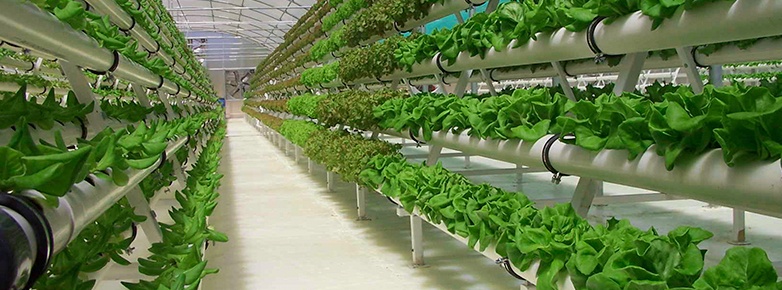
Wick Growing System
This is considered the most basic hydroponic setup because it is a “passive system”, meaning it has no moving parts. Nutrients move from the reservoir to the plant's roots by a wick or string. Plants can be housed in a variety of growing mediums. When choosing your growing medium, it is important to pick one that transports water and nutrients well. Some good options include coconut coir, perlite, or vermiculite.
Due to their simplicity, wick systems are a great option for growing smaller plants in an educational setting with children or beginner gardeners. The downside to wick systems is that they can be inefficient if not set up properly. Using the wrong wicking material will distribute nutrients unevenly resulting in poor plant growth or even death.
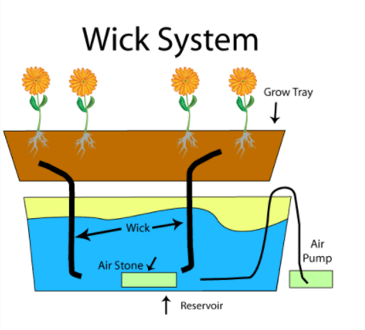
Water Culture Growing System
Water culture systems are the most technically simple to use. Plant roots are suspended, often in net pots held by a Styrofoam platform, directly in the nutrient solution. An air pump is used with an air stone to pump oxygen into the water. Proper aeration of the water is important because, in this system, roots remain submerged all the time 24/7. With enough air bubbles rising through the nutrient solution, as well as from dissolved oxygen in the water itself, your plants will not drown.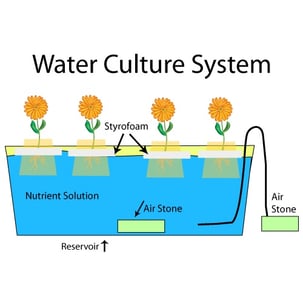
Nutrient Film Technique (N.F.T.) Growing System
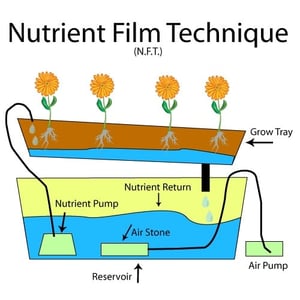 The most commonly thought of hydroponic system, especially in commercial production but also with homer growers, is the Nutrient Film Technique (N.F.T.) Growing System. Plants are grown in channels that have a thin layer (film) of nutrient solution flowing through the base and constantly running along the bottom of the channel. The roots are wet, but not submerged.
The most commonly thought of hydroponic system, especially in commercial production but also with homer growers, is the Nutrient Film Technique (N.F.T.) Growing System. Plants are grown in channels that have a thin layer (film) of nutrient solution flowing through the base and constantly running along the bottom of the channel. The roots are wet, but not submerged.
When the solution reaches the end of the channel, it drops back into the main reservoir and is sent back to the beginning of the system again making it a recirculating system. A recirculating system is great because it produces less waste. However, this particular system relies heavily on the use of pumps and any mechanical failure can be detrimental to your crop.
Ebb and Flow Growing System
Another system named for its process, the ebb and flow system works by flooding the plant's roots with nutrient solution temporarily. After a period of time, the solution is allowed to drain back into the reservoir. Controlled by a submersed pump with a timer, this process of flooding occurs several times a day.
While this method uses energy and water in an efficient manner, plant roots can dry out quickly if environmental conditions are off or if the schedule falters due to mechanical failure.
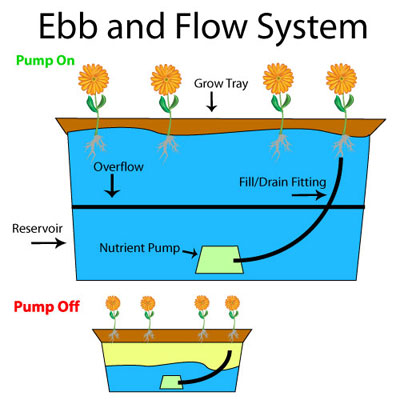
Drip Growing System
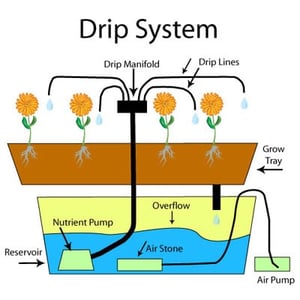
Drip systems are one of the most widely used types of hydroponic systems around the world.
They are simple to operate on a large scale, making them ideal for commercial growers. Controlled by a timer, a pump releases nutrient solution onto the base of each plant via drip lines.
Aeroponic Growing System
In a Recovery Drip System, the excess nutrient solution is collected and reused. This setup is more sustainable; however, the pH and nutrient strength levels may vary and must be monitored.
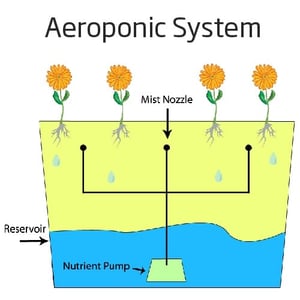
The Non-Recovery Drip System does not collect excess solution.
While the theory of aeroponic growing is simple, it is the most technical hydroponic system. While some may choose to include some growing medium, these systems operate primarily with plant roots hanging in the air.
A timer is used to control the nutrient pump, ensuring that the plants are properly misted with the nutrient solution every few minutes. Unlike other systems, aeroponic systems expose plant roots to a lot more oxygen. The materials to make these systems can become costly.
Conclusion
For those interested in setting up a home hydroponic system, there are plenty of options to get you started. From starter kits to total do-it-yourself instructions, there is an option out there that will fit your lifestyle.
Once you know the system you want to build, the next stop will be understanding what to measure. Strong technical knowledge and the right tools will allow you to meet expectations on plant growth and quality, take corrective action early on, and ultimately focus on your passion for home-grown veggies.
That's why we've dedicated our blog as a helpful resource for you to use! Catch up on the latest products, explore industry trends, discover testing tips, learn how to improve results, and more. Got questions? Email sales@hannainst.com.

